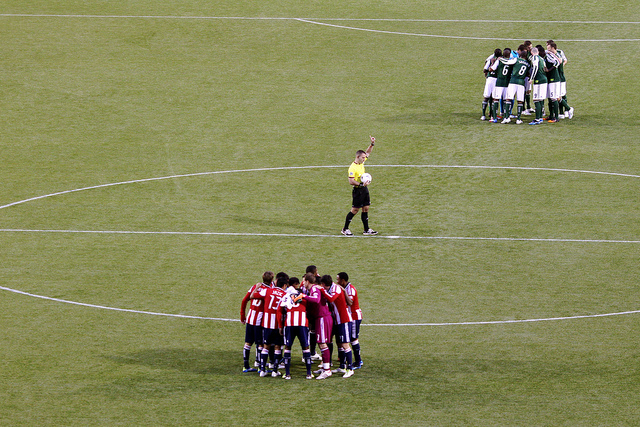Unlock the Magic in Your Story Now
Get the Free 20 questions to Ask Before Launching Your Idea workbook when you sign up for occasional updates.
Get the Free 20 questions to Ask Before Launching Your Idea workbook when you sign up for occasional updates.
Articles filed in: Strategy
Better By Degrees
filed in Innovation, Strategy
 The track and field coach Bill Bowerman spent twenty-four years training athletes at the University of Oregon to optimise their performance. Bowerman was also the co-founder of Nike, and most famously the inventor of the waffle sole running shoe (which he prototyped by pouring rubber into the family’s waffle iron). Bowerman’s innovation made the shoe lighter and increased its grip. A tiny tweak that changed everything for the athletes who wore them and the company that made them.
The track and field coach Bill Bowerman spent twenty-four years training athletes at the University of Oregon to optimise their performance. Bowerman was also the co-founder of Nike, and most famously the inventor of the waffle sole running shoe (which he prototyped by pouring rubber into the family’s waffle iron). Bowerman’s innovation made the shoe lighter and increased its grip. A tiny tweak that changed everything for the athletes who wore them and the company that made them.
Throughout history, what look like giant leaps were a result of tiny adjustments. Incremental shifts. Slight gaps that were filled. Something once thought trivial understood to be essential. The untapped and unseen, newly revealed.
The people who change the world pay attention to the seemingly insignificant. They’re always on the lookout for a way to make things better by degrees. What we see when we look at an athlete is someone running fast. What Bowerman saw was someone who could run faster.
Image by Happy Rower
In Time
 You don’t know for sure that the broccoli at the local organic store was grown sustainably or without pesticides, but you trust that it was and you’re happy to pay more for it. You have no proof that like the label says the bread gluten-free until long after you’ve eaten it, but you don’t question that it is. You haven’t seen beyond the cover of your favourite author’s new book, but that doesn’t stop you pre-ordering it months in advance.
You don’t know for sure that the broccoli at the local organic store was grown sustainably or without pesticides, but you trust that it was and you’re happy to pay more for it. You have no proof that like the label says the bread gluten-free until long after you’ve eaten it, but you don’t question that it is. You haven’t seen beyond the cover of your favourite author’s new book, but that doesn’t stop you pre-ordering it months in advance.
In the absence of all the facts, you have to make a judgement call about trustworthiness.
You believe a story built on promises because you trust that the person or the business is honest, competent and reliable. Trust creates the connection between buyer and seller. And that connection requires patience.
We don’t hustle our way quickly to success—we earn our way there in time.
Image by Zug Zwag
A Stop Start Guide To (Business) Success
filed in Strategy
 Stop worrying about how to get attention.
Stop worrying about how to get attention.
Start paying attention.
Stop obsessing about creating awareness.
Start being more aware.
Stop making people want things.
Start making things people want.
Stop analysing the data.
Start seeing the people it represents.
Stop trying to be more interesting.
Start being interested.
Stop thinking about their advantage.
Start with your agency.
Stop keeping score.
Start sharing.
Stop competing.
Start contributing.
Stop comparing.
Start noticing.
Stop doubting.
Start doing.
Stop striving.
Start caring.
Stop wondering about what’s next.
Start here and now.
Image by Micah Camara
The Value Of Goals And Outcomes
 We tend to think of goals and outcomes as one and the same. They’re not.
We tend to think of goals and outcomes as one and the same. They’re not.
Let’s say your goal is to run a marathon. Crossing the line at the end of the twenty-sixth mile is your goal. But the effect of the actions you take by trying to achieve that goal is worth more than having run the race.
Getting ‘there’ feels good. But never discount the value of what you’re learning as you go.
Image by Shutter Runner
Effort, Performance And Joy
 The indoor bikes at my gym have a display monitor on the front. The monitor is designed to show you how much effort you’re putting into your workout. In theory the monitor helps you to get better results. You can see how the combination of your speed and resistance increases your power output. You can measure the distance you’ve travelled and the calories you’ve burned.
The indoor bikes at my gym have a display monitor on the front. The monitor is designed to show you how much effort you’re putting into your workout. In theory the monitor helps you to get better results. You can see how the combination of your speed and resistance increases your power output. You can measure the distance you’ve travelled and the calories you’ve burned.
A constant awareness of the numbers is supposed to help you improve your performance. But I’ve found that it sometimes has the opposite effect. It’s hard not to just stare at those numbers for the whole time you’re on the bike. When you focus mainly on the numbers, you tell yourself a story about how well you’re doing compared to yesterday. You’re not thinking about the aggregate measurement of your performance over time or about the benefits of showing up day after day—week in, week out. You’re simply trying to increase your effort. You’re thin-slicing in the most unhelpful way. And you’re taking all of the joy out of working out.
Something surprising happens when you cover the monitor, avoid looking at the numbers. Suddenly you’re more aware of your body and how it’s capable of responding. You’re not limited by your perception of yesterday’s performance. You don’t have a mental ceiling about what’s possible. And so you not only achieve better results, you enjoy the ride.
We tend to believe the secret to improving performance is to pay attention to our output—that prioritising the numbers is what makes them go up. The numbers are just one sign that you’re on the right track. There are a hundred different ways you can improve them over time. But staring straight at the numbers and lamenting about what you’re not achieving right this second isn’t one of them.
Journeying is the act of travelling from one place to another—not a moment of arrival.
You get there by being committed to the journey.
Image by R Reeve
Priorities And Metrics
 We often default to using narrow parameters to qualify worthiness or quantify excellence. We focus on a company’s revenue or an entrepreneur’s net worth, count the number of books an author sells or followers an influencer amasses.
We often default to using narrow parameters to qualify worthiness or quantify excellence. We focus on a company’s revenue or an entrepreneur’s net worth, count the number of books an author sells or followers an influencer amasses.
What we choose to measure has a direct impact on what we then prioritise. And of course, what we prioritise determines the kind of companies and communities we build.
Better then, to set our priorities first and metrics later.
Image by Andrew
Progress And Potential
filed in Innovation, Strategy
 Nobody knows who invented the button five thousand years ago. At first, buttons were simply used to adorn clothing. It wasn’t until the invention of the buttonhole three thousand years later that buttons became functional. It took us two thousand years to reimagine what the button could do. And in that moment fashion and even the fabric of our society was changed forever.
Nobody knows who invented the button five thousand years ago. At first, buttons were simply used to adorn clothing. It wasn’t until the invention of the buttonhole three thousand years later that buttons became functional. It took us two thousand years to reimagine what the button could do. And in that moment fashion and even the fabric of our society was changed forever.
The invention of the buttonhole meant we had a more reliable way of securing our clothes. Instead of having to drape ourselves in swathes of cloth, we could wear more fitted garments that used less fabric. Clothing could be designed not only to cover bodies but also to subtly reveal them. People were free to move more easily because their clothing stayed put. That newfound freedom likely had a knock-on effect on both creativity and productivity.
It took someone asking a better question about what a button was for, to see what a button could be for.
All progress is about taking a small step into the unknown, towards the uncharted territory of the never been done before.
Image by Sam Rodgers. HT to Isaac Mizrahi
The Power Of Identity In A Competitive World
 Nobody who read the pre-match reports or the post-match statistics would have predicted a one-all draw. Iceland, a country with a population of 334,000, was fielding a team of semi-professional players, in their World Cup debut against Argentina, one of the world’s best footballing nations. There was no way Iceland could compete with the experience and skill of the Argentinian team.
Nobody who read the pre-match reports or the post-match statistics would have predicted a one-all draw. Iceland, a country with a population of 334,000, was fielding a team of semi-professional players, in their World Cup debut against Argentina, one of the world’s best footballing nations. There was no way Iceland could compete with the experience and skill of the Argentinian team.
During the game, Argentina had 78% of the possession and took twenty-seven shots at goal. Iceland had only eight. On paper, the dominant team—which also happens to be captained by this year’s world-leading goal scorer, should have won by a mile. Iceland secured an unexpected draw, not by trying to beat their opponents at the Argentian game, but by playing their own game.
The Iceland manager, Heimir Hallgrimsson, summed up his team’s strategy like this:
“We know how we can win football matches. It is just a fact that Argentina have superior individuals with superior skills and if we go one-on-one with them you don’t need to ask who will win the game. We have to play in a special way and we have a clear identity.”
Iceland was never going to win by competing like Argentina.
They triumphed by playing like Iceland.
When we get caught up competing, we get caught out playing catch up.
It turns out you don’t need to compete when you know who you are.
Statistics from the BBC. Image by Thomas Leth-Olsen
What Successful Companies Do
 Just one thing.
Just one thing.
Successful companies help people do things they want to do, so they can be who they want to be.
What do the people you serve want to do?
How can you help them to be who they want to be?
Image by Tim Dennell
How Change Happens
 The success of whatever we make, serve, sell or advocate for is dependent on creating and sustaining change. The same rules apply whether we’re trying to change perception or behaviour, get people to buy our software or stop using plastic straws.
The success of whatever we make, serve, sell or advocate for is dependent on creating and sustaining change. The same rules apply whether we’re trying to change perception or behaviour, get people to buy our software or stop using plastic straws.
7 Steps To Making Change Happen
1. Acknowledgement
The problem, unmet need or dilemma is recognised by the prospective audience.
Awareness of the solution is not enough
2. Acceptance
Recognition that change is desired and possible
3. Adoption
Agreement about the solution to the problem.
4. Agency
A deep conviction that we have the power to create the change
5. Action
A perception or behaviour change takes place.
This change doesn’t always lead to overnight success or an immediate resolution to the problem.
6. Adherence
Sustained behaviour change, habit creation, compliance at work or loyalty to a brand.
7. Advocacy
Evangelists spread the word because of a sense of belonging and affinity with the brand or cause.
As ethical marketers and passionate activists, we spend a lot of our time working on awareness—believing that once people see our solution, they will immediately adopt it. We couldn’t be further from the truth. Making change happen is hard (and worth it). We need more time and patience than we realise.
Image by us mission